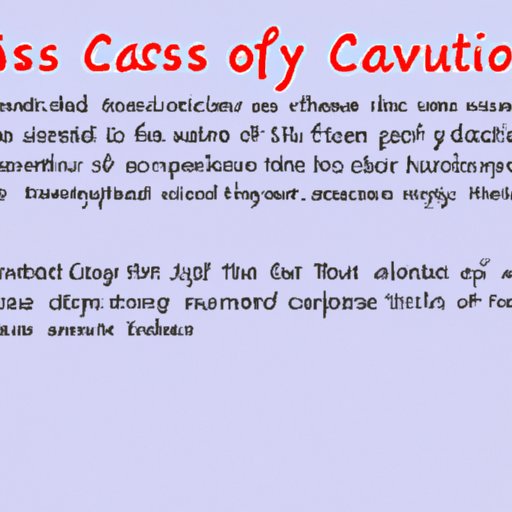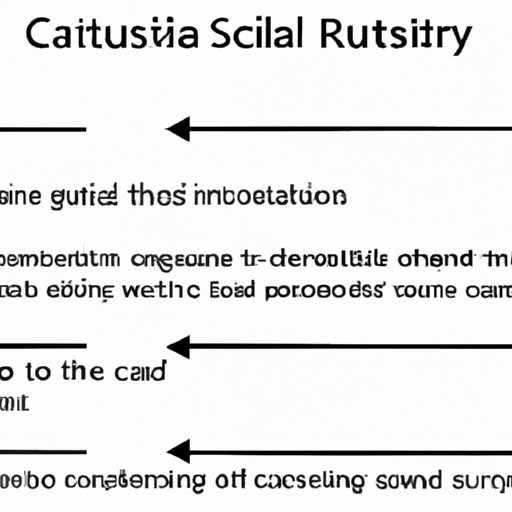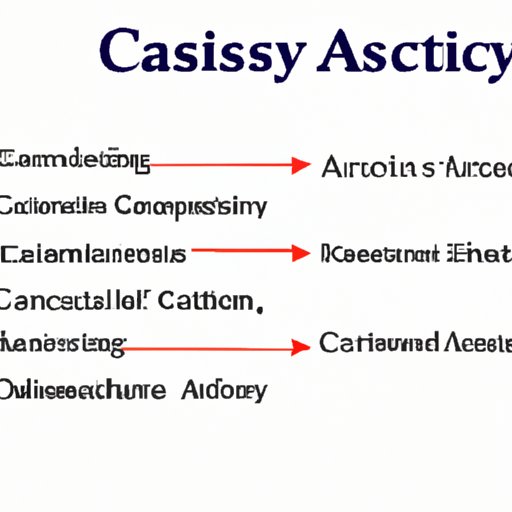Introduction
Causal analysis in writing is a type of writing that examines the cause and effect relationships between two or more events, phenomena, or people. It is often used to explain why something has happened or to explore the complex relationships between different aspects of a situation. By examining these cause and effect relationships, writers can gain a better understanding of the underlying factors that influence a particular event or phenomenon.
Exploring the Basics of Causal Analysis in Writing
What is causal analysis and how to use it effectively in writing? Causal analysis can be used to examine the causes of an event or phenomenon, as well as its effects. It can also be used to explore the relationships between multiple events or phenomena. A successful causal analysis should be able to identify the root causes of an event or phenomenon and draw conclusions about those causes based on evidence and logical reasoning.
When it comes to crafting powerful causal analysis in writing, there are several techniques that can be employed. The first is to identify the key players or variables involved in the event or phenomenon being examined. This includes identifying any individuals, organizations, or other entities that may have contributed to the event or phenomenon. Once the key players or variables have been identified, it is important to consider the roles they played in the event or phenomenon, as well as the possible relationships between them.
In addition, it is important to consider the historical context in which the event or phenomenon occurred. This includes looking at the events and circumstances leading up to the event or phenomenon, as well as any external forces that may have impacted it. Examining the historical context can help identify potential causal relationships between different aspects of the event or phenomenon.
Finally, it is important to analyze the data related to the event or phenomenon. This includes collecting and examining relevant data such as statistics, surveys, interviews, and other sources of information. Analyzing the data can help identify patterns and trends that may indicate causal relationships between different aspects of the event or phenomenon.

Benefits of Incorporating Causal Analysis in Your Writing
There are several advantages to incorporating causal analysis in your writing. First, it can help you gain a better understanding of cause and effect relationships. By examining the various factors that contribute to an event or phenomenon, you can better understand how different elements interact with each other to create the overall outcome.
Second, incorporating causal analysis into your writing can help increase the clarity of your writing. By analyzing the various elements involved in an event or phenomenon, you can make sure that your arguments are well-supported and that your conclusions are logically sound.
Finally, by incorporating causal analysis into your writing, you can enhance the argumentation of your piece. By examining the causes and effects of an event or phenomenon, you can provide a more comprehensive explanation of the issue at hand and demonstrate how different elements interact with each other to create the overall outcome.

How to Identify Causal Relationships in Your Writing
Once you have identified the key players or variables involved in the event or phenomenon being examined, the next step is to identify causal relationships between them. To do this, you need to analyze the data related to the event or phenomenon. This includes collecting and examining relevant data such as statistics, surveys, interviews, and other sources of information.
It is also important to examine patterns and trends in the data. By looking at the data from different angles, you can identify any potential correlations between different aspects of the event or phenomenon. For example, if you notice a correlation between two variables, it could indicate that one variable is causing the other.
Finally, it is important to establish correlations between the variables. This involves looking at the data and determining whether there is a statistically significant relationship between them. If a correlation is established, then it is likely that one variable is causing the other.
Conclusion
In conclusion, incorporating causal analysis into your writing can be a great way to gain a better understanding of cause and effect relationships and improve the clarity of your writing. By examining the causes and effects of an event or phenomenon, you can provide a more comprehensive explanation of the issue at hand and demonstrate how different elements interact with each other to create the overall outcome. Additionally, by analyzing the data and examining patterns and trends, you can identify any potential correlations between different aspects of the event or phenomenon.
By using the techniques outlined above, you can ensure that your writing is clear, well-supported, and logically sound. By incorporating causal analysis into your writing, you can benefit from improved understanding of cause and effect relationships, increased clarity in your writing, and enhanced argumentation.
(Note: Is this article not meeting your expectations? Do you have knowledge or insights to share? Unlock new opportunities and expand your reach by joining our authors team. Click Registration to join us and share your expertise with our readers.)
